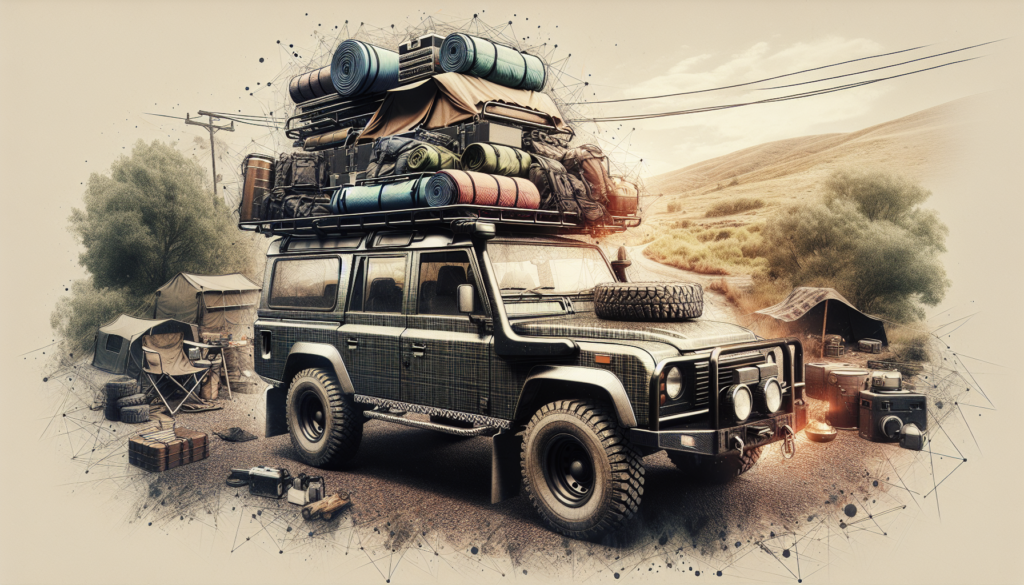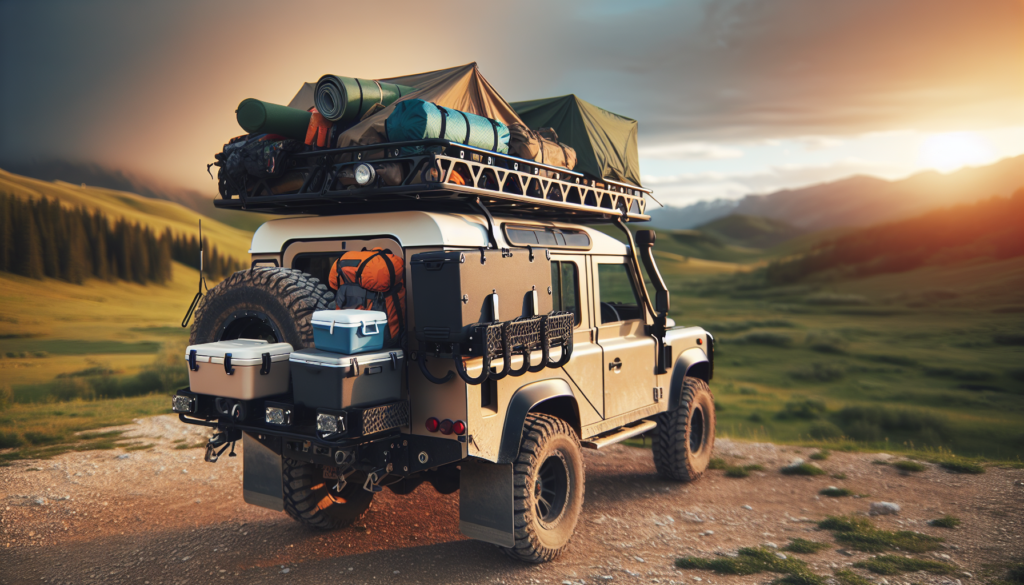Looking to hit the open road and embark on an epic adventure of overlanding? Well, if you’re wondering how to efficiently store all your gear, we’ve got you covered. In this article, we’ll explore the top storage solutions for overlanding gear, so you can organize your essentials and have everything you need at your fingertips. From innovative roof racks to practical drawer systems, we’ll guide you through the best options available, ensuring that your next off-road journey is nothing short of smoothly organized. So, let’s dive in and discover the ultimate storage solutions for your overlanding gear! When it comes to overlanding, having the right storage solutions for your gear is essential. After all, you want to make sure that your equipment is secure, easily accessible, and doesn’t take up valuable space inside your vehicle. That’s where storage solutions like roof racks, roof boxes, bed racks, rear cargo carriers, drawer systems, cargo bags, trailer hitch storage, toolboxes, interior storage solutions, and modular storage systems come in. In this comprehensive article, we’ll explore the benefits of each of these storage options, the different types available, and the factors you should consider when choosing the right storage solution for your overlanding adventures.

Roof Racks
Benefits of Roof Racks
Roof racks are one of the most popular storage solutions for overlanding enthusiasts, and for good reason. They offer numerous benefits, including:
-
Increased Storage Capacity: Roof racks provide a convenient way to transport bulky items such as kayaks, bicycles, or camping gear that may not fit inside your vehicle.
-
Versatility: Roof racks come in various shapes and sizes, allowing you to choose the one that best suits your specific needs. They can be adapted to carry different types of equipment, such as skis, snowboards, or even a rooftop tent.
-
Easy Installation: Most roof racks are designed to be easily installed on the roof of your vehicle, requiring minimal tools and time. This makes them a practical solution for those who frequently switch between city driving and overlanding trips.
Types of Roof Racks
There are several types of roof racks available on the market, including:
-
Crossbar Style: This type of roof rack consists of a pair of bars that run across the width of your vehicle’s roof. They can be used to attach various accessories, such as cargo boxes or kayak mounts.
-
Full-Length Roof Racks: Full-length roof racks provide a continuous platform that spans the length of your vehicle’s roof. They offer increased storage capacity and are often favored by overlanders who need to carry a significant amount of gear.
-
Roof Baskets: Roof baskets are open, cage-like structures that allow you to secure your gear without the need for additional cargo boxes. They are great for carrying items with irregular shapes or larger pieces of equipment.
Factors to Consider When Choosing a Roof Rack
When selecting a roof rack for your overlanding adventures, there are a few key factors to consider:
-
Weight Capacity: Ensure that the roof rack you choose has a sufficient weight capacity to support the gear you plan to carry. It’s crucial to consider both the dynamic weight (while driving) and static weight (when stationary) that the roof rack can handle.
-
Compatibility: Check if the roof rack you’re considering is compatible with your vehicle’s make and model. Some roof racks are specifically designed to fit certain vehicles, while others offer universal fitment options.
-
Ease of Installation: Look for a roof rack that is easy to install and remove, as you may often need to take it off when not in use. Quick-release mechanisms and tool-free installation are desirable features to consider.
-
Noise and Wind Resistance: Some roof racks are designed with aerodynamics in mind, which can help reduce wind noise and improve fuel efficiency. Consider opting for a roof rack with features such as wind fairings or streamlined designs if noise is a concern.
By carefully evaluating the benefits, types, and factors to consider, you’ll be well-equipped to choose the perfect roof rack for your overlanding adventures.
Roof Boxes
Advantages of Roof Boxes
Roof boxes, also known as cargo boxes or rooftop cargo carriers, offer a range of advantages for overlanders:
-
Enhanced Protection: Roof boxes provide weatherproof and lockable storage space, keeping your gear safe from the elements and secure from theft.
-
Additional Storage: Roof boxes significantly expand your available storage capacity without sacrificing interior space in your vehicle. This is particularly useful for longer trips or when packing bulkier items.
-
Organization: With designated compartments and dividers, roof boxes help keep your gear organized and easily accessible. No more struggling to find that one item buried beneath other equipment!
Different Sizes and Styles of Roof Boxes
Roof boxes are available in various sizes and styles to accommodate different needs and preferences:
-
Low Profile Roof Boxes: Low profile roof boxes have a sleek and aerodynamic design, reducing wind resistance and noise while driving. They tend to be narrower and longer, offering a streamlined aesthetic and increased fuel efficiency.
-
High Capacity Roof Boxes: For those with a need for ample storage space, high capacity roof boxes are the way to go. They are wider and deeper, allowing you to carry bulkier items like camping chairs, tents, or sports equipment.
-
Dual-Side Opening Roof Boxes: Dual-side opening roof boxes feature doors that open from both sides, making it easier to load and unload your gear. This is especially beneficial when parking your vehicle in tight spaces.
Features to Look for in a Roof Box
When selecting a roof box, keep the following features in mind:
-
Dimensions and Capacity: Consider the size of the roof box and ensure it has enough capacity to accommodate your gear. Look for the internal dimensions as well, as these will influence how efficiently you can pack and access your items.
-
Durability and Weather Resistance: Opt for a roof box made from sturdy materials that can withstand different weather conditions. UV-resistant and waterproof construction will guarantee the long-lasting protection of your gear.
-
Mounting System: Look for a roof box with a user-friendly mounting system that allows for easy installation and removal. Some roof boxes feature a tool-free mounting system, which can be a time saver and simplify the process.
-
Security Features: Ensure the roof box has a reliable locking mechanism to protect your belongings from theft. Look for boxes with reinforced locks and an additional safety feature that prevents accidental opening.
When choosing a roof box, take into account the advantages, different sizes and styles, as well as the features mentioned above to find the perfect storage solution for your overlanding needs.
[Continued…]


